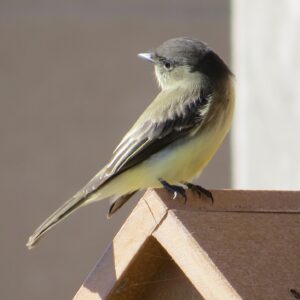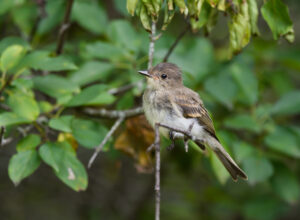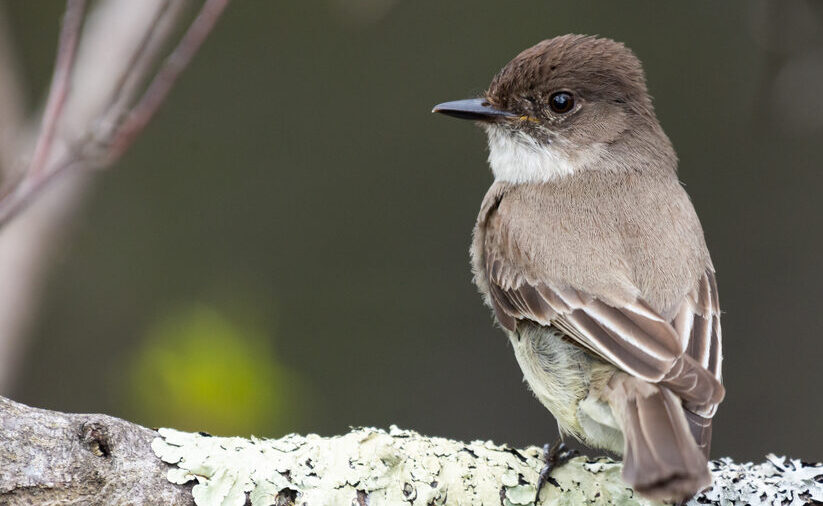Eastern Phoebe, Sayornis phoebe
Bill Rowe
So far, this series has included three of our common flycatchers, or “tyrannids” (family Tyrannidae), each representing a different genus. Another common one, representing a fourth genus, is the Eastern Phoebe, a plain but distinctive little bird that is apt to be found almost anywhere, often near human habitation. It will build its nest under the eaves of a barn or your house, within a picnic shelter, or under a bridge; a rocky ledge or hollow will do if people haven’t been thoughtful enough to build what it wants. It also likes to perch rather low in plain view, doing its characteristic down-and-up tail bobbing and allowing you to study it at leisure until it takes off after some flying insect—a bee, a wasp, a fly, a grasshopper, or a moth. The phoebe is our hardiest flycatcher, being the earliest to arrive in spring (March), the latest to depart in fall (October or beyond), and the most likely to stay within the U.S. for the winter. As such, it’s also one of those birds that, if wintering in Missouri, may do so along a gradient of average temperature, with the largest number in southern Missouri, then fewer as you go northward, reaching the status of a rarity in the northernmost counties. Other birds in this suite of “climate-dependent winterers” are the Field Sparrow, Ruby-crowned Kinglet, and Hermit Thrush, all of which, like the phoebe, are now wintering farther north in growing numbers. Elsewhere in North America, our phoebe has two close relatives: Say’s Phoebe, widespread in the west and occasional in Missouri, and the Black Phoebe of the west coast and southwest.
IDENTIFICATION: First of all, no eyering. Then compare with Eastern Wood-Pewee and note these things: (1) the phoebe has a dark brown or blackish head, contrasting with a white throat and paler gray back (pewee has a more blended gray head with less contrast); (2) the phoebe usually has indistinct wingbars (pewee’s are more distinct and obvious); (3) the phoebe has an all-black bill, including the lower half (pewee’s bill is orange on part or all of the lower half); (4) the phoebe has shorter wingtips extending past the rest of the wing, reaching only the base of the tail (pewee has long wingtips that extend part way down the tail, giving it more of a torpedo shape overall). Juvenile phoebes will violate points 1 and 2 (grayer head and face, stronger wingbars of a cinnamon tone) but points 3 and 4 will still hold true; and, if in doubt, watch for the persistent tail-bobbing behavior.
ST. LOUIS STATUS: Common spring, summer, and fall; occasionally still here in winter.
Learn more and listen to the songs and calls of Eastern Phoebes
here.






